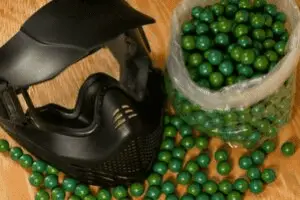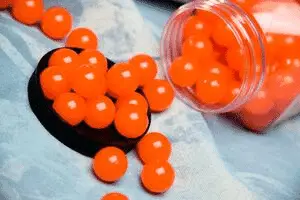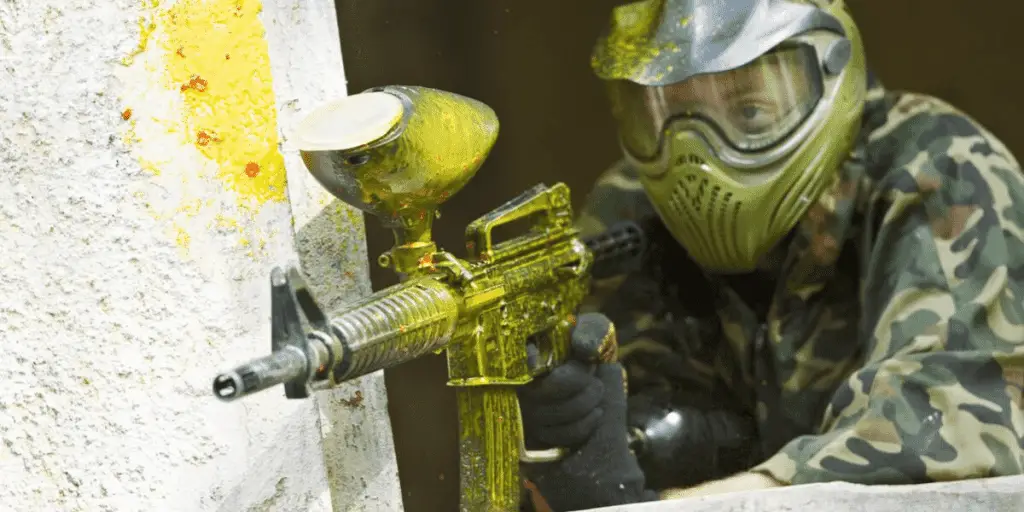If you want your paintballs to work correctly in between games, then you’ll need to learn how to store your paintballs properly. By maintaining your paintballs correctly, they’ll last you in between competitions, and still deliver a high-quality performance during your match.
Many brands of paintballs provide manufacturers’ directions, which you should follow when storing them. You should keep paintballs in a dry, cool place and rotate them occasionally.
Since there isn’t much information available on the Internet today about storing paintballs, we’ve created this guide to help save you time researching paintballs. We’ll break down everything you’d want to know about paintballs, including storing them.
Storing Your Paintballs
Paintballs do cost money and, unfortunately, they are perishable. So, if you don’t take care of them correctly, you’ll wind up wasting money. Since everybody hates throwing away cash, it’s better to learn how to correctly store your paintballs so that you don’t need to worry about wasting them.
Paintballs come with a manufacturer’s lifespan, and that can vary greatly depending on the quality and price of the paintballs you’ve purchased. Regardless of how long your paintballs will last, all paintballs are made up of biodegradable components that break down over time.
So, you can’t just leave your paintballs out anywhere and expect they’ll still work as if they are new. Paintballs can change if you leave them out too long and become unusable if you aren’t careful.
We’ll discuss what you can do to store your paintballs below.
Check the Manufacturer’s Directions
When you want to store your paintballs, the best way to start is by checking the manufacturer’s directions. Some, but not all, paintball manufacturers guide how to store and maintain their products.
Now, if you are the type of person that throws away the packaging without reading it, you might have a problem. Often, storage instructions come on the packaging. However, if you no longer have the packaging, you can Google the instructions for your particular kind of paintball.
A Cool, Dry Place

If you purchased a package of paintballs that didn’t come with care instructions, don’t worry. There are a few basic methods most people involved in paintball matches use to store their paintballs. One of the top tips is to keep the paintballs in a cool, dry place. You’ll also need to rotate them now and then.
The proper temperature to keep paintballs in is about 50 to 60 degrees Fahrenheit. Make sure the area isn’t humid because humidity will cause the paintballs to swell and not function correctly. Here are a few other pointers:
- You’ll need to flip the paintballs every few weeks to make sure you don’t leave the paintballs in the same position for long. Letting the paintballs sit can make them twisted, also creating problems for you during your paintball matches.
- Don’t put your paintballs in direct sunlight, ever. Sun isn’t good for your paintballs because the UV rays can break down the materials that make up your paintballs.
- Some paintballers like using zip-lock bags to store paintballs. That’s an excellent idea because it keeps the paintballs dry and safe from the air. If you use zip lock bags, remember you’ll still need to make sure you store your paintballs in cold temperatures and rotate them.
- Never store your paintballs in the trunk of your car or an open cupboard. Remember, they have to be put someplace that is cool and dry if you don’t want to waste them.
How Long Can Paintballs be Stored?
If you don’t correctly take care of your paintballs, then you most likely will experience problems when you try to use them. You’ll probably find a few broken balls, misshapen balls, and divots on the balls. These problems will still allow you to use the paintballs to play, but your paint won’t work as well. That makes the game a little less enjoyable.
If you’re trying to figure out how long your paintballs can be stored, there’s no one-size-fits-all answer here. How long your paintballs last depends on the manufacturer, the batch, and what they are comprised of to assess this question.
But many retailers claim they are good for 3 months. With proper storage, some players claim they were good up to a year.
Some paintballs get hard over time and don’t break at all when you shoot them. Other types get brittle. Still, others become soft and swell, mostly due to humidity, making them difficult to fire.
How long you can store your paintballs will depend on the manufacturer as well as how much you invested in the paintballs. The more you spend on your paintballs, the longer the paintballs will last. Cheaper paints tend to get useless pretty quickly. Expensive paint also works better for shooting when compared to more inexpensive paint.
What Materials Are in Paintballs?
Different manufacturers use different types of ingredients in their paintballs. However, there are a few common materials found inside all kinds of paintballs. Most paintballs are comprised out of non-toxic, biodegradable, food-grade ingredients.
If you aren’t sure what that means, don’t worry. We’ll break it down for you in a little more detail to help you out.
- Paintballs are non-toxic. That’s an essential feature of paintballs because if they were toxic, nobody would use paintballs and we wouldn’t risk our health to have fun.
- Paintballs are also biodegradable. That means you don’t need to worry about cleaning them up once you are done playing with them. Paintballs are made to decompose, and they don’t cause any damage to the environment.
- Paintballs are made with food-grade ingredients. So, if any part of a paintball gets into your mouth, it won’t harm you. Still, you should never eat a paintball.
How Are Paintballs Made?
Paintballs are comprised of two different parts. The first part of a paintball is the hard, outside shell. The second part is the liquid filling you’ll find inside the paintball. You can picture a paintball as being slightly similar to an egg.
Just like an egg, the outside shell on the paintball protects the filling and holds it. However, once you shoot the paintball, it will crack, and the paint will fly. Using paintballs that are made up of these two parts is essential if you want to train to win a paintball tournament because those are the types of paintballs used in competitions.
Let’s cover the parts of a paintball in a little more detail below.
Paintball Shell
A paintball’s shell has to be slightly durable because it needs to be fired from a paintball marker before it cracks. At the same time, a paintball shell also needs to break upon impact with another object. If a paintball shell cannot do both of these things successfully, then you won’t wind up with a suitable paintball.
If the shell on your paintball is too hard, when you try to fire at your opponent and hit him or her, the shell won’t break correctly. You can’t win a paintball match if your balls are hitting opponents and bouncing off of them, but not leaving your mark on them.
You’ll also run into similar issues if your paintball shell is too soft. If the shell is too weak, the paintball probably won’t ever make it through the firing process. You’ll likely wind up with a chopped ball or a barrel break. Check my article on why paintballs break in your gun and how to solve it. You want to avoid your paintballs breaking in your marker. Plus, if your paintball shell is too soft and your paintballs can’t make it out of your marker, you won’t be effective.
So, since paintballs need to be both strong but also breakable, Gelatin is typically used as the shell of your paintballs.
- Gelatin allows paintballs to have a shell that will stay intact but also break and mark opponents when necessary. You’ll also find Gelatin in foods, snacks, healthcare products, and candy. Gelatin is often used as a capsule for pills and other products.
- Gelatin works excellent when adequately maintained. One problem with the Gelatin used in paintballs is that it absorbs water. If Gelatin takes in water, it swells and loses its shape. That only happens if you don’t properly store your paintballs.
- If the Gelatin in your paintballs gets swollen, you’ll wind up losing a lot of accuracy. It’s much easier to shoot a perfectly round paintball with accuracy than something that is shaped oddly.
- Also, shooting swollen paintballs causes jamming and barrel breaks. Remember, your paintballs are made to be a specific size so that they fire quickly out of your marker. If they are too big, then they’ll get stuck and explore in your marker, causing all kinds of problems.

Paintball Fill
The inside of a paintball works a bit differently. On the inside of your paintballs, you’ll find a water-soluble dye. Often, this dye is polyethylene glycol. That means you get an inert liquid that’s safely used in a wide variety of industries. Those industries include commercial, medical, chemical, biological, and industrial. Polyethylene glycol works well with paintballs because it offers plenty of thickness and flexibility.
When you’re purchasing paintballs, here are a few things you’ll want to remember about paintball fill.
- You want to purchase paintballs that use a water-soluble dye, preferably polyethylene glycol. Don’t use paintballs that have an oil-based fill. Water-soluble dyes are much more natural to handle when it comes to clean-up. Most oil dyes aren’t simple to wash off.
- Another reason to avoid oil-based paintballs is that they can wreak havoc on your gun if you experience a chipped ball or a barrel break. Anything oil-based can wreck your marker if it doesn’t fire correctly. Water-soluble paintballs work much more accessible in this regard.
Also, another vital tip here about paintballs. You may have heard about people “freezing” paintballs to store them. That’s a terrible idea because the paintballs could take in water, and it’s also hazardous. So, don’t ever try it.
Freezing paintballs is impossible because polyethylene glycol doesn’t freeze until it drops to -15C. Anyway, freezing your paintballs will swell them since they’ll take in water, and you’ll wind up with a very inaccurate set of paintballs to fire off out of your marker. To read more about freezing paintballs and why to not do it, read my other article.
What Makes a Good Paintball?
If you’re wondering what makes a suitable paintball, we’ve got a list of three criteria for that. We’ll cover that in our list below.
- Good paintballs are perfectly spherical. You’ll wind up more accurate shots with a perfect shape. Remember that any paintballs that look pear-shaped or appear oblong won’t allow you to shoot straight, decreasing your accuracy.
- Good paintballs are harsh but brittle. We mentioned how this works above when we described the outer and inner areas of a paintball. You need paint that can survive being fired, but also brittle so that it shatters when it hits a target. If a paintball is too intense, it won’t break and leave a mark. If it’s too brittle, it might not even make it out of your marker intact.
- Good paintballs are clean. Since accuracy is so important when it comes to paintballs, you’ll want to make sure they are clean. Clean paintballs are more accurate. If you have any contaminants in your paintballs, it can make your shots more inaccurate.
Paintball Maintenance Tips
To help you better maintain your paintballs so that they’ll always be up to par when you’re in a match, we’ve got a few tips for you:
- Make sure you do everything you can to keep your paint clean.
- If you notice that your paint is getting dirty, don’t use those paintballs. My suggestion is to either throw them out or put them away and clean them on a rainy day.
- Do everything you can to avoid getting your paintballs wet. Getting your paintballs wet means they’ll swell and wind up getting misshapen. You won’t be able to fire them with any accuracy if that happens, and they can also harm your marker.
- Never leave your paintballs in the sun. If you do, they’ll get harsh and brittle, and you won’t be able to use them effectively.
You want to make sure you keep your paint as clean as possible and store that paint in a clean container. Also, make sure the container is kept in a cool, dry place until you decide to use your paintballs.
Safety Tips for Paintballs
Paintballs are very safe to use, but if you don’t use them correctly, then they can create problems. You need to use paintballs appropriately and store them correctly, and then you’ll be safe. Below we’ll share a few safety tips for paintballs.
- Don’t ever freeze paintballs. Remember, it’s dangerous, and it makes them ineffective.
- Don’t eat paintballs. You need to be smart about things.
- Keep your paintballs away from pets and children. Make sure you store your paintballs in an area that’s difficult for pets and children to access.
- Paintballs are a choking hazard for children. Pets can get very sick if they eat paintballs and wind up with a sever salt and electrolyte imbalance.
- If you think your pet may have eaten paintballs, take your pet to the vet immediately for treatment. Make sure you tell your vet that your dog ate paintballs, so the vet knows what to treat.
Washing Paintball Paint Off Your Clothes

If you’re a newbie to paintball, you might be wondering what happens with the paint once you get hit. Should you keep wearing some old clothes you don’t care about when playing the game? You don’t have to. Paintballs are water-soluble, so if you throw them into your washing machine, they should get clean.
It helps to spot clean, dense paint areas as best you can before you put your clothes in the washer. Also, we recommend making sure you wash your paintball clothes alone. You don’t want the paint to bleed or get onto other garments.
Avoid drying your gear right away in the dryer, too. That’s because heat helps to make stains stay. We recommend letting your paintball clothes hang dry so that you don’t wind up setting any stains into your uniform with your dryer.
If you’re still having trouble getting some of the spots off of your uniform, you can soak the uniform in dish detergent and water overnight. That should help to loosen up the paint. Then, try your washing machine one more time, and air dries the garment once again.
Caring for Your Paintball Equipment
While most active paintball enthusiasts take time figuring out technical gear and focus a lot of time on learning about their guns, it’s also essential to know the basics about paintballs. While paintballs might seem like a simple concept, there is quite a bit to learn when it comes to paintballs.
Many people make the mistake of assuming all paintball ammo is the same, and that’s not the case. There is a difference between high-quality, more expensive paintballs and cheaper paintballs when it comes to aiming and how long those paintballs last. While that’s not a hard and fast rule for all paintball manufacturers, it does apply most of the time.
Properly caring for your paintballs can make quite a bit of difference when it comes to shelf life. You’ll need to know how to properly care for paintballs and your paintball equipment to get the most out of your game.
So, we’ve already covered quite a bit of information about caring for your paintballs. However, we haven’t talked much about your paintball marker, which you’ll also need to know how to handle correctly.
Once you are done with your match and you’re heading home, you’ll need to make sure you take care of all of your equipment, including your paintball marker. A paintball marker is an expensive product, so it’s certainly worth learning how to clean and store it correctly. You don’t’ want to show up to your next match and realize something is wrong with your paintball marker.
Caring for Your Paintball Marker

It’s not too difficult to maintain your paintball marker or your gear. If you know a few easy steps, you’ll be able to keep your paintball gear working correctly. Since paintball isn’t a cheap hobby, knowing how to maintain and clean your equipment correctly can help you go a long way and save you money in the long run.
When you finish a game on the field, here is how you should attend to your paintball marker:
- Make sure you de-gas your marker in the target range.
- Make sure the tank is turned off. Fire to ensure the air is gone from the marker.
- Take the tank off and put the thread saver to the bottle.
- Swipe your squeegee from the barrel to the outside of the marker.
- Check to make sure all screws in your marker are secure.
- Once that’s done, you can load your gear and head home. You have a few more steps to complete at home.
Once you get home from your paintball game, you’ll have to do a little more work to take care of your gear correctly. We’ve got the steps listed below.
- First, remove your batteries from both the marker and hopper.
- Store them safely.
- Prevent sparks coming from the 9-volt terminal by putting electrical tape over it.
You don’t need to clean your marker after every single paintball match. However, you should clean it regularly and make it a habit. By doing a complete cleaning at home, you’ll prevent oil, paint, and dirt buildup inside your water. When you’re ready to give your marker a thorough cleaning, follow the steps below.
- Take the tank off as well as the barrel.
- Use your squeegee to clean the inner area of the barrel. Only wash your marker with water. Do not use chemical cleaners, abrasive cloths, or soap.
- Next, get a dry, soft towel and wipe along with the clean areas of the marker.
- Leave the marker out to dry before you put it back together. You want to make sure the marker dries out.
You only need to do this cleaning every few months. However, that can also depend on how often you play. You don’t want to clean the marker apart any more than you have to because you might wind up losing a bold or failing to put it back together correctly.
While you won’t need to clean your marker with water often, you will need to oil your marker after each day you finish playing paintball. Oiling is a great way to make that marker last a long time.
- When everything dries on the marker, you want to oil the bolt and the o-rings, so they don’t rust.
- When you use oil on your marker, only purchase oil that is specifically made for paintball guns. All other types of oil can damage your marker. Since your marker is a substantial investment, you want to avoid damaging it in any way.
- When you oil your marker, you don’t need a lot of oil. You should use very little. Oiling your marker is necessary if you want your gun to continue to work correctly. Also, your marker will last a lot longer if you consistently oil it. Remember, all you need is a very light coat.
To be safe before oiling your marker, we suggest you take a look at the owner’s manual to look up any specific cleaning or storing instructions. If you don’t have the owner’s manual, you should be able to Google the information based on the make and model of your gun.
Paintball Marker Storage Instructions
Now that you’ve finished your paintball game, you’ve arrived home, and you’ve cleaned your paintball marker, it’s time to learn how to store your paintball marker. We’ve provided a list of steps below to guide you with the proper way to save your paintball marker.
- Make sure the trigger on your marker is locked in safety mode.
- Check to see that the barrel plug is in place before unloading and removing the air supply on the marker.
- Once you’ve done that, empty and remove the air supply from the marker.
- Pick a cool, dry place to store your marker. Make sure that the site isn’t in any direct sunlight and won’t get exposed to humidity.
- Keep in mind that the tank on the marker is very prone to get damaged from the heat and sun. That’s because Co2 expands when the temperature is high outside.
After Care Instructions for Soft Paintball Gear
What do you do with the rest of your dirty gear once you get home? How do you store that? We recommend using a trash bag to store your foul gear and clothing while you are driving home. By using a trash can, you won’t need to worry about getting any unwanted paint in your car. Also, you can dump your dirty gear immediately into the washer once you get home.
Your elbow pads, knee pads, and other gear should be tossed into a mesh bag if you have one. The mesh bag will allow all of your equipment to dry before you get home, so that type of bag is helpful to own.
If you don’t own a mesh bag, hang dry your gear once your washer is done and let them air dry. Don’t throw your gear into the dryer because heat can set stains, and you want to make sure you remove all of the paint
